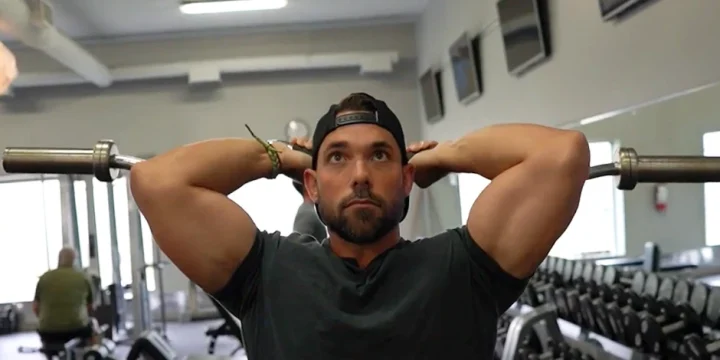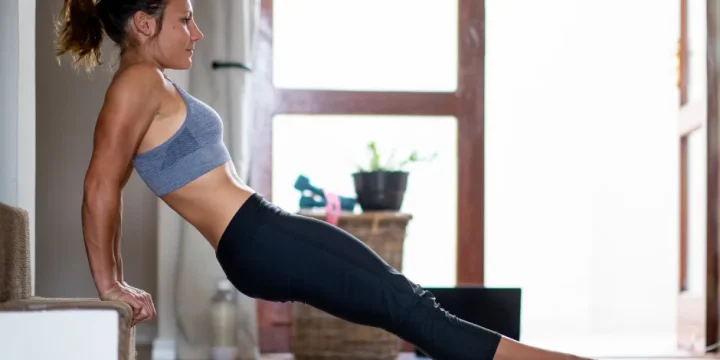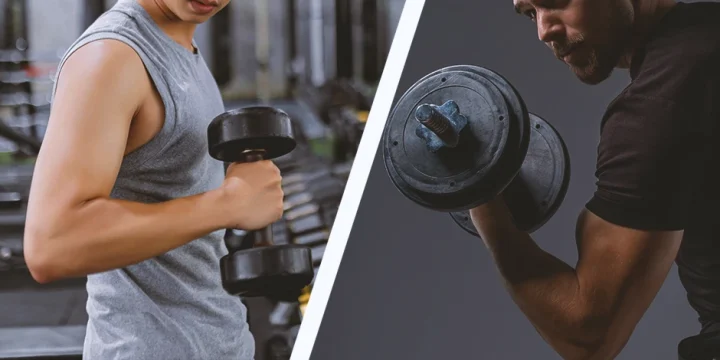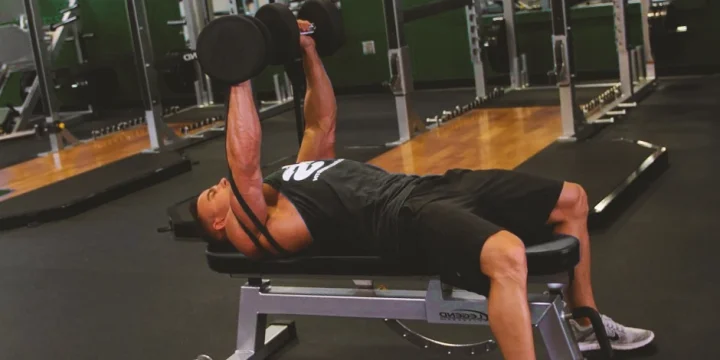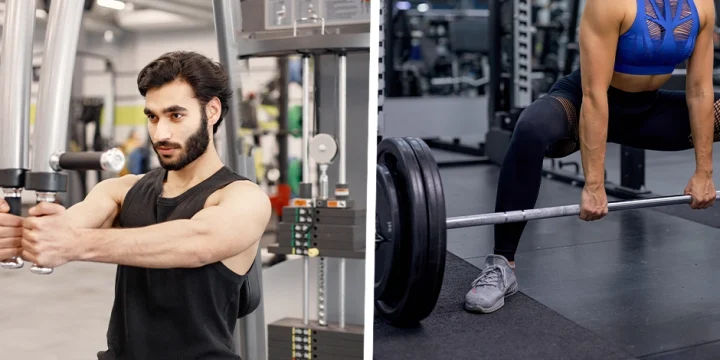I recently intervened in a discussion between a few clients at the gym who couldn’t seem to agree on whether bench presses or dips were better for building upper body strength and muscle mass.
The funny thing was that they all had excellent points and showed some great results from their chest building exercise routines.
It seemed to come down to a “my chest is bigger” argument, which is never the right way to look at it.
Quick Summary
- Dips are better for targeting the pectoralis major with less shoulder involvement, while bench presses offer more flexibility in targeting different chest muscles.
- Dips require significant upper body strength and offer limited intensity variation, whereas bench presses are more versatile in equipment and muscle group targeting.
- Overloading on the barbell bench press without well-developed muscle stabilizers can lead to injuries, as highlighted by Merrithew.
- In my opinion, both dips and bench presses are essential for a balanced chest workout; dips offer focused muscle engagement, and bench presses allow for comprehensive development.
Dips Pros And Cons
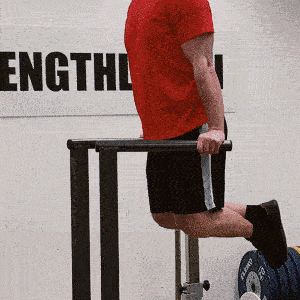
In my years as a coach, I've seen firsthand the pros and cons of dips.
Dips tend to have kind of an elite athlete aspect to them, and you rarely see people at the gym doing these exercises. Or at least not doing them right.
One reason most beginner fitness programs won’t include them is that you need a considerable amount of upper body strength to get started with dips.
While both dips and bench presses are excellent for upper body strength, it's notable that dips offer a unique advantage in enhancing shoulder flexibility and mobility, a benefit not typically associated with the more rigid motion of the bench press. This makes dips not just a muscle-building exercise, but also a key movement for shoulder health and injury prevention.
We’ll get to some training exercises further down, but let me first show you what to expect.
Pros

It Targets the Pecs
The first thing I need to point out is that dips are possibly one of the best ways to target your pectoralis major muscles (pecs). And they do so with much less engagement from your shoulders.
It Allows Greater Range of Movement
Secondly, you can achieve a great range of motion, especially once you get to a stage where you can complete 6 or 7 reps.
The deeper you go, the more intense the dips become.
Dip Stations More Affordable and Versatile
Finally, you can buy a dip station with a full-size frame to allow for some pull-ups at a much lower price than you’d spend on a bench, barbell, and set of weight plates.
You’ll also find that a good dip station won’t take up much space, leaving you with more options to expand your home gym.
Cons

Lack of Flexibility
One of the downsides with dips is that you don’t have huge flexibility when it comes to intensity levels.
Once you can do a full set of 10 to 12 dips, your only real option is to switch to weighted dips. And with a weight vest or belt, you don’t have the same ability to make adjustments as you would with bench presses.
May Cause Injury Especially When Done With Weights
I also find that bad form with weighted dips is more likely to cause injuries in your shoulders than a bench press would.
That’s why I would recommend you to work with a personal trainer first to make sure you get the dip movement right from the start.
“Dips are simple. They're effective. They look bloody cool, and they pack on slabs of muscle, using just your bodyweight and a stable surface.”
- Edward Cooper, Writer at Menshealth.com.
Bench Press Pros And Cons
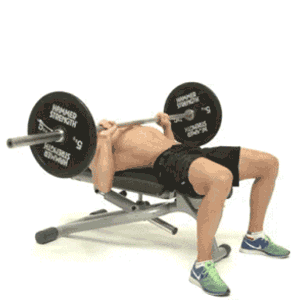
The bench press is a way to do a full upper body workout while isolating very specific muscles.
As a result, you should be able to layer on muscle mass where it matters to you most.
From my coaching perspective, the bench press offers a versatile workout for all fitness levels.
That’s why you see most gyms lined up with multiple weight benches, but let’s take a closer look at what to expect.
Pros

A Lot More Flexible Depending on Your Equipment
First of all, you have a huge range of flexibility by switching between a barbell and dumbbell setup.
Dumbbells give you more range of motion and the option to switch to more hand positions. And an Olympic bar will allow you to pile on the weights and maintain more control.
Targets a Variety of Muscle Groups
By adjusting the backrest of a flat bench, you’ll also be able to target the upper, middle, and lower chest muscles.
For beginners, the dumbbell bench press is the better option as you can set yourself up in a matter of minutes, and you won’t need someone to spot you.
Cons

Pricey
The first thing I need to highlight is the cost of buying an adjustable or a flat bench, along with a full set of dumbbells or Olympic weight plates.
If you’re serious about gaining chest muscle mass, then you could quickly be heading for $1,000 just to do one set of exercises in a home gym.
Requires Precautions as It May Cause Injuries
Both barbell and dumbbell bench presses can expose you to risks of accidents and injuries if you don’t get the form right.
You may also experience some kind of wrist pain from benching.
The barbell tends to invite loading it up more, but if your muscle stabilizers aren’t developed enough, then you can quickly run into trouble, according to the Merrithew [1].
And with dumbbells, the problem is often getting into the setup position and not maintaining good posture.
Related Articles:
Sample Dip Exercises
The best way to do this bodyweight exercise is to make sure you have a setup where your legs can almost hang to the ground when you’re at the lowest point of the dip.
The two types of dips I get my clients to are these ones.
Chest Dips
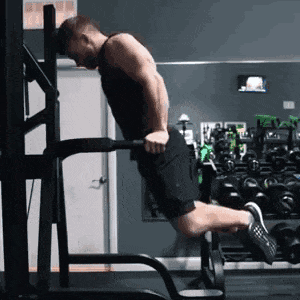
For effective chest muscle engagement, lower your body in dips, keeping forearms vertical.
Descend until elbows form a right angle and upper arms align with the ground.
Push up to engage the core and chest. Progress to weighted dips after mastering 12 reps.
In my coaching, I've guided clients to effectively engage chest muscles in dips by maintaining vertical forearms, a technique I've perfected over years.
Learn more: Chest Dip Alternatives for a Stronger Upper Body
Triceps Dips
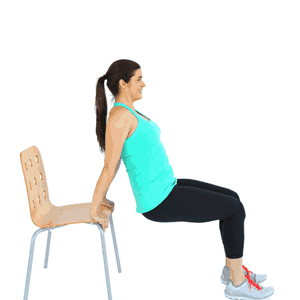
Triceps dips on dip bars are an effective variation.
Position your feet on a bench or chair, keeping arms slightly behind the body to focus the effort on the triceps instead of the chest. For added intensity, progress to weighted dips.
In my training sessions, I've guided clients through triceps dips, emphasizing arm positioning to isolate the triceps.
This exercise, when done correctly, can dramatically improve arm strength and definition.
Sample Bench Press Exercises
What I love about the bench press is that the slightest modification will allow you to target specific chest muscles beyond your pectoralis major.
Here are my two favorites.
Barbell Bench Press
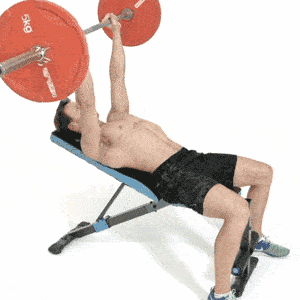
The barbell bench press, despite sounding basic, remains a top choice.
For effective execution, hold the bar slightly wider than shoulder-width, lower it to your chest in a controlled three-count, then press up in two counts.
Focus on full movement and proper form over speed for quality muscle engagement.
Drawing from my years of coaching, I stand by the barbell bench press as a fundamental yet effective choice for building chest strength.
Incline Dumbbell Presses
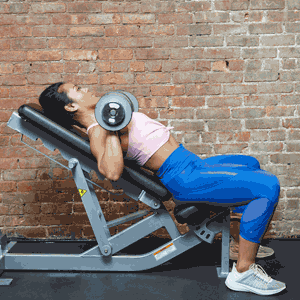
I’ve already mentioned that dumbbells can give you a longer range of motion, but by also setting yourself up in an incline position, you can shift more of the strain to the upper pecs.
You should also notice your shoulders taking some of the weight, which is why you’ll want to pick some heavier dumbbells.
Through my coaching, I've found incline dumbbell presses to be highly effective for targeting upper pecs.
Choosing The Right Exercise For Your Strength Level

Having coached athletes of various strengths, my recommendation in the dips vs. bench press debate always considers the individual's current strength level.
If you struggle with 6 to 8 unassisted dips, you may find bench presses more beneficial.
Bench presses can be a safer starting point to build strength while minimizing shoulder strain.
But once your upper body is able for several sets of dips, then I think it can be a very effective exercise to have in your regular routines.
Whether one chooses dips or bench presses can depend heavily on their specific training goals. For those focused on muscle hypertrophy or athletic performance, dips might be more suitable, while bench presses could be better for someone aiming for raw strength building, especially for beginners. Understanding these nuances can help fitness enthusiasts make more informed decisions about their workout routines.
FAQs
Can You Build Muscle With Dips?
Yes, you can build muscle with dips. They are an excellent option for isolating the chest area, and once you can do more than 12 reps, you can easily switch to weighted dips to increase the intensity.
They're also the go-to exercise both for the chest and triceps.
Are Dips Better Than Decline Bench Presses?
Yes, dips are better than decline bench presses because they activate the entire chest area. A decline bench press allows you to get more isolated upper body strength training.
Will Dips Make Your Chest Bigger?
Yes, dips will make your chest bigger if you maintain good form to avoid shoulder problems. For dips to work as proper chest-building exercises, you need to be able to slowly lower yourself down far enough to fully engage all muscle groups in your chest.
Why Are Dips So Hard?
Dips are so hard because you have to support and stabilize your entire body weight. They also put a lot of strain on your shoulders if you haven’t built enough strength, which can easily lead to a rotator cuff injury [2].
References:
- https://www.merrithew.com/blog/post/2019-09-18/ask-the-expert-what-are-the-stabilizer-muscle
About The Author
You May Also Like
